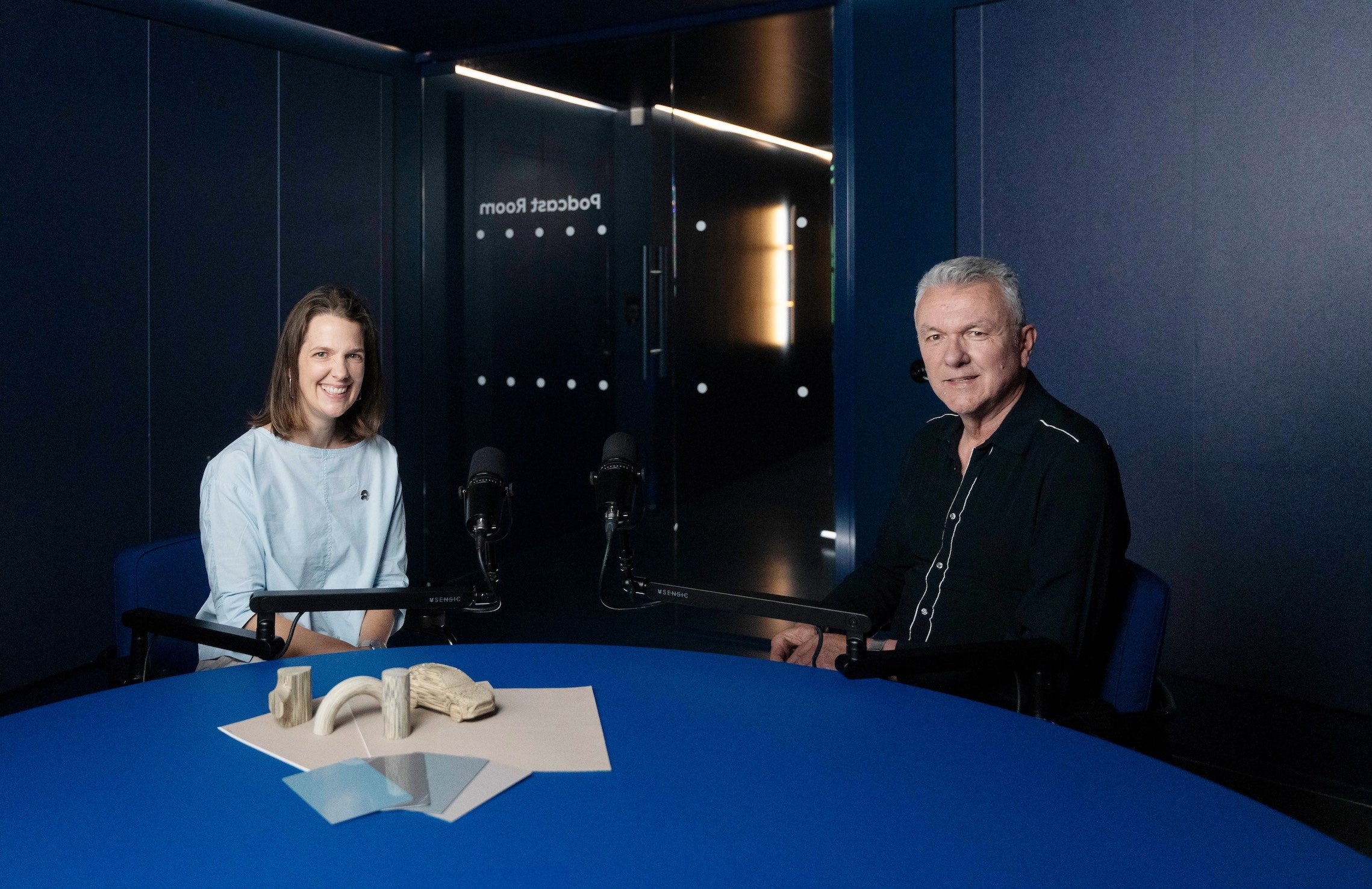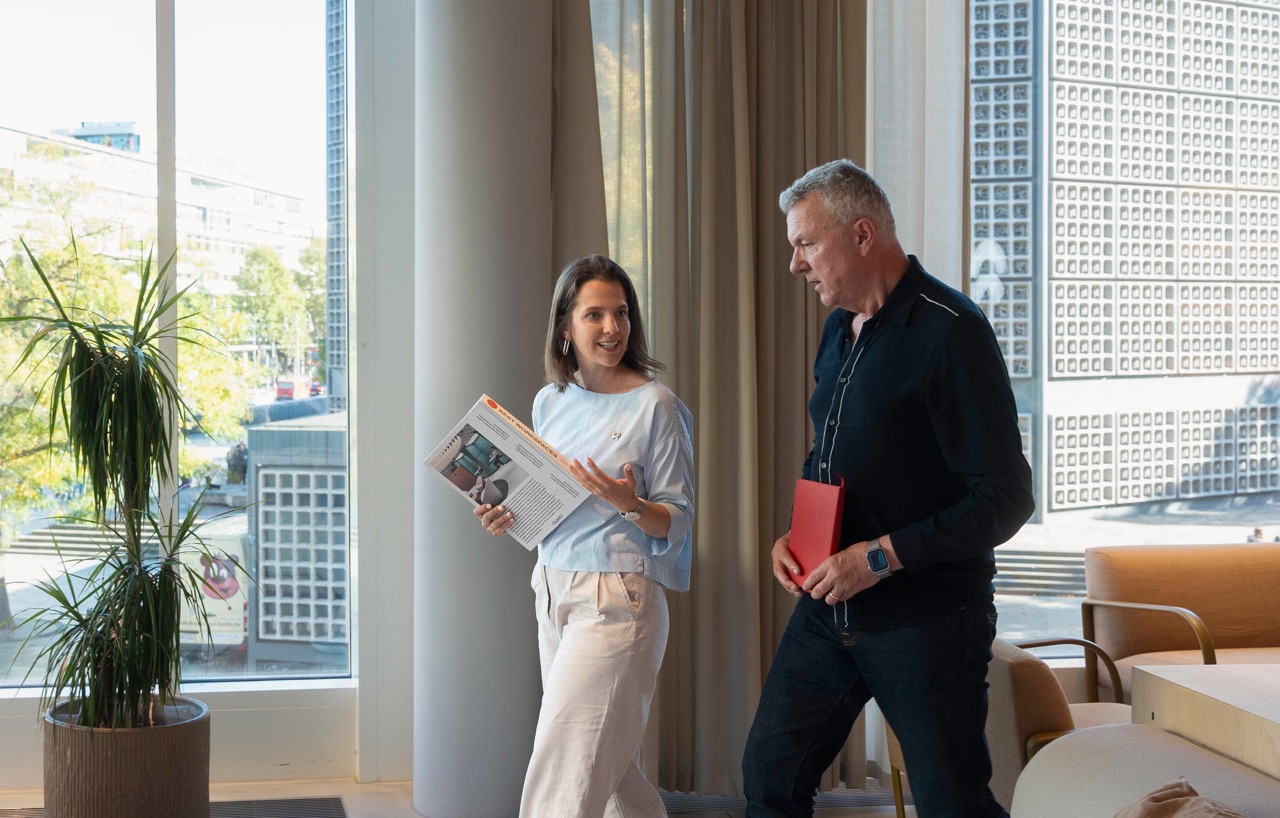House of NIO #5 – Designing with Purpose: Decoding NIO's Colours, Materials, and Finish Approach
12/12/2024 by NIO

Sustainability, innovation and user-focused design are driving forces behind the electric vehicle revolution. In the fifth episode of Season 2 of our House of NIO podcast, Stephanie Waser, head of CMF (Color, Material, Finish) design at NIO Europe, joins Roger Atkins, the founder of Electric Vehicles Outlook and an industry veteran with over 40 years of experience guiding the industry through the electric revolution. Together, they explore the intersection of sustainable CMF design and user-centered innovation in electric vehicles.
From pioneering materials to a global approach to design philosophy, discover how NIO is creating smart, sustainable cars that truly reflect the future of mobility.
Sustainable design: More than materials
CMF design plays a vital role in shaping the look and feel of a car. It encompasses every material that users interact with – inside and out. At NIO, our focus goes beyond aesthetics. It’s about creating materials that are sustainable, practical and emotionally engaging to ensure users feel connected to their vehicles – in fact, this idea was already core when we created our CMF design department in 2016:
“When we started, we asked ourselves if we should take inspiration from the automotive world or from other sources. So we decided to try something different. We bought design furniture which passed the test of time in terms of quality, functionality and look and feel. To find inspiration, we don’t go to car shows too often but rather visit the Milan Furniture Fair, the London Design Festival or the Dutch Design Week.” – Stephanie Waser
This unconventional approach allows us to step outside the traditional automotive mold. Instead of following industry norms, we focus on user-centric interiors that reflect the comfort, quality and warmth of a modern home. This philosophy is clearly visible in our use of Karuun, a rattan-based material that promotes sustainability by protecting rainforests while enhancing vehicle interiors with natural beauty and durability. Roger Atkins reflects on the importance of such choices for the broader industry:
“The new players, especially those in the electric vehicle space, are rethinking the industry from the ground up. Traditional players will say that they’ve always focused on that. But it’s quite self-evident that they haven't so much. At least not as much as they might have done.” – Roger Atkins
Designing for every passenger
Traditional car design has long centered around the driver. However, for us, the experience of every passenger is equally important – reflecting the way modern vehicles are used. This philosophy is brought to life in our concept car EVE, where the interior is reimagined as a multi-functional space for work, relaxation and connection.
“Because every part of the car is important, we decided that with EVE, it shouldn't be so much about the driver anymore. Even for me, the second row is much more important because that’s where I can relax, work or spend time with my loved ones.” – Stephanie Waser
This is why our EVE concept car features distinct zones to accommodate different user requirements – whether it’s someone enjoying the experience of driving or another passenger unwinding on a long journey. The goal is to make the car feel as familiar and comforting as your home.
Drawing inspiration from the design world, we use home-inspired materials like textiles from renowned suppliers such as Kvadrat. These high-quality fabrics offer both durability and a soft, welcoming touch and are often found used in luxury furniture. By introducing these elements, we ensure every user – whether driver or passenger – feels at ease.
This redefinition of space marks a shift towards cars becoming shared, living environments. For Stephanie Waser and her team, this is not just about functionality but about creating emotional connections that transform the driving experience.
From vision to action: A collaborative process
Achieving sustainable breakthroughs requires more than design vision. At NIO, innovation is made possible by a culture of collaboration where ideas flow freely between teams and turn visions into actions. A great example for this approach is Karuun:
“When we brought Karuun into the automotive world, it wasn’t ready for production. But with belief in our ‘Blue Sky’ vision, collaboration with engineering, and constant testing, we made it happen.” – Stephanie Waser
This open and agile approach allows us to experiment with materials that push industry boundaries while aligning with our commitment to sustainability. For instance, sourcing Karuun directly from Indonesia to China eliminates unnecessary travel across supply chains, reducing the material’s overall carbon footprint.
Other OEMs have already followed our lead – adopting Karuun as part of their own sustainability initiatives. These incremental changes drive collective progress.
“Sustainability is not achieved in isolation. It takes open-minded teams, partnerships and leadership willing to take risks.” – Roger Atkins
User-driven innovation to push sustainable vehicle design
Unlike traditional user testing, which often takes place late in the development process, we integrate user feedback from the very start. Our sustainable design philosophy at NIO is therefore guided not only by creative vision but also by real-time user feedback. For example, Stephanie Waser mentions that she starts her day by checking user preferences for colors, materials and finishes across markets:
“My favorite thing is waking up and looking at take rates: Do users prefer synthetic leather or chrome-free Nappa leather? Do they choose the haptics in the configurator? Do they decide for a silver or rather a green exterior color? I see this – and I act on it.” – Stephanie Waser
This organic approach ensures the final product resonates with users across different regions – without catering to cultural clichés or outdated norms. This feedback loop is not just a process but an opportunity to continuously learn, adapt and deliver experiences that users genuinely love. For example, green exterior colors have performed exceptionally well, leading to the formation of user communities like the ‘Green Club’ in China.
Less complexity for a sustainable future for all
Sustainability in automotive design is about more than materials. It’s about reducing complexity, streamlining production and delivering solutions that create lasting value for users:
“We want to do less but better. Deliver users the highest quality in fewer, smarter choices.” – Stephanie Waser
By prioritizing innovation, simplicity and sustainability, we are redefining what’s possible in automotive design – and leading the way toward an eco-conscious future that’s driven by a circular economy.
Explore the full discussion on House of NIO podcast
We’re pushing the boundaries of what’s possible in mobility. From integrating advanced AI to prioritizing customer-first design, we’re redefining how people interact with their cars. These ideas and more are at the heart of the House of NIO podcast. Season 2 features six monthly episodes exploring smart electric vehicle innovations and the future of mobility. Short insider editions are also available mid-month for quick updates.
NIO’s commitment to sustainable materials, user experience and collaborative design is shaping the future of smart mobility. Tune in to Season 2, episode 5 of our House of NIO podcast to explore the full conversation between Stephanie Waser and Roger Atkins and discover how we’re building a more sustainable future for all.













